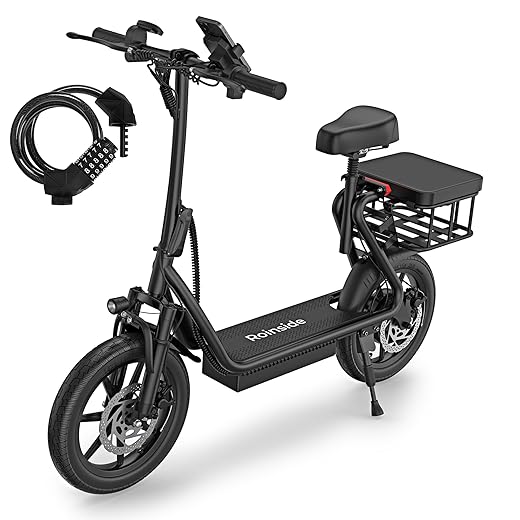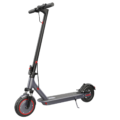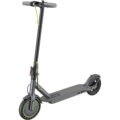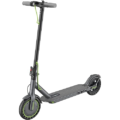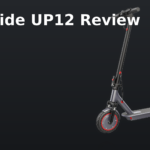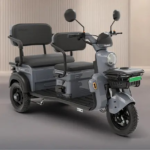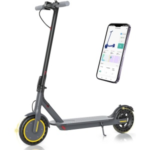- Home
- Scooters
- Electric Scooters
- Roinside SUP20
Roinside SUP20
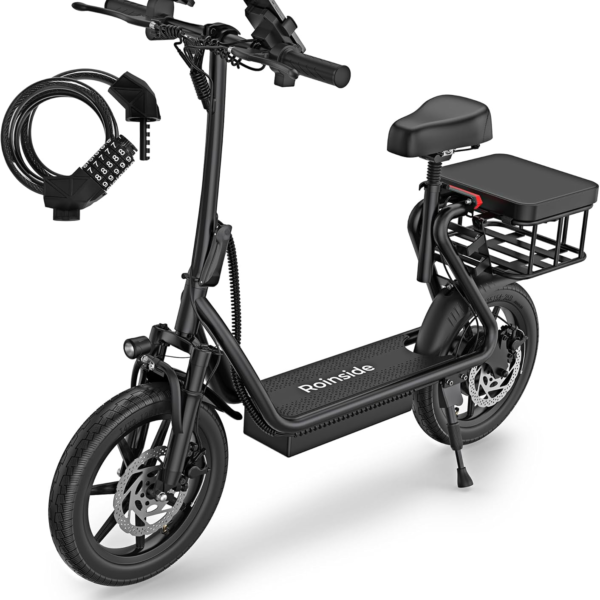


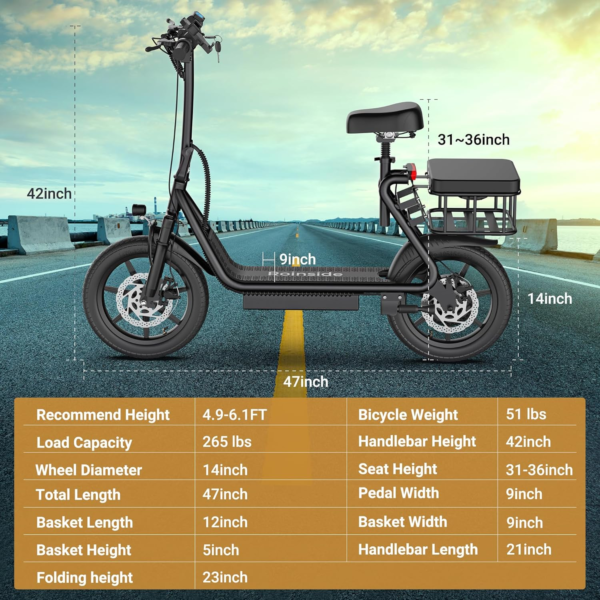
- Battery Range: 21–23 miles (34–37 km)
- Top Speed: 19 mph (30 km/h)
- Motor Power: 350 W
- Weight Capacity: 265 lb (120 kg)
- Charging Time: ≈5 h
- Scooter Weight: Not specified
PROS
- 265 lb max rider weight
- Rear disc + electronic EABS braking
- 8.5″ solid (honeycomb) tires
- Bluetooth app with lock and cruise control
- LED headlight and tail/brake light
- Quick-folding commuter design
CONS
- No suspension (rigid chassis)
- IP rating not specified
- Solid tires reduce comfort vs pneumatic
- 350 W motor limits hill climbing
Table of contents
- What Is the Roinside SUP20?
- How the Roinside SUP20 Works
- Key Specifications (clean table)
- Design & Build Quality
- Performance Fundamentals
- Battery, Range & Efficiency
- Ride Quality & Comfort
- Braking & Safety Features
- Portability & Daily Usability
- Maintenance & Care
- Weather & Seasonal Considerations
- Roinside SUP20 vs Alternatives
- Who the Roinside SUP20 Is (and Isn’t) For
- FAQs
- Glossary
If you want a simple, sturdy, sit-or-stand scooter that favors comfort and easy commuting, the Roinside SUP20 is a practical pick. It pairs large wheels and an optional seat with a torquey hub motor, app support, and dual braking. Consequently, it suits riders who value stability, predictable handling, and low-drama daily transport. Moreover, this overview explains the SUP20 in plain language, highlights the core features, and helps you decide whether it fits your routine. If you’re also considering a lighter small-wheel alternative, take a look at the Roinside UP8 Pro.
What Is the Roinside SUP20?
The Roinside SUP20 is a compact electric scooter focused on approachable power and everyday usability. In many listings, it appears as the “14-inch tire with seat” variation within Roinside’s commuter family. As a result, it aims to balance stability, convenience, and low maintenance for city riders, campus trips, and short errands.
Rather than chasing extreme top speed, the SUP20 leans into predictable handling and steady cruising. Typically, it pairs a 500 W-class hub motor with a long-range battery and a folding frame. Additionally, you get a front light, rear brake light, and a dual braking setup. You also get app features, a clear display, and—if you select that configuration—an integrated seat kit for comfort on longer rides.
How the Roinside SUP20 Works
Think of the SUP20 as a compact e-moped you can fold. Under the deck, a battery feeds a brushless hub motor in the rear wheel. Meanwhile, a small controller near the deck acts like the scooter’s “brain,” sending smooth pulses of power to the motor. Here’s how the main pieces work together:
- Motor (rear hub). When you press the thumb throttle, the controller delivers current to the hub motor, which spins the rear wheel. Because the motor is built into the wheel, there’s no chain, no belt, and little mechanical noise.
- Controller. This module translates throttle position into calibrated torque. Therefore, it moderates acceleration, sets the mode-based top speed, and manages electronic braking if the scooter supports e-ABS.
- Battery. A lithium-ion pack stores energy and releases it as you ride. It’s typically non-removable for users, so you charge the scooter via an external port.
- Throttle. A thumb lever on the handlebar controls speed. Consequently, you can feather power gently in tight spaces.
- Brakes. Expect a dual system—a rear disc plus electronic assistance (often called e-ABS or regenerative braking). The disc brake gives firm bite, while the electronic side smooths deceleration and may recover a touch of energy.
Because the pieces are tightly integrated, the SUP20 rides like a single, quiet unit rather than a machine with many moving parts. In practice, that simplicity is why commuters often pick hub-drive scooters for daily use.
Key Specifications (clean table)
Note: Specifications can vary slightly by package or market. Where a figure is not published by the brand or listing, it’s marked accordingly to avoid guesswork. Values appear in both imperial and metric units where available.
| Block | Spec | Value |
|---|---|---|
| General | Model | Roinside SUP20 (14-inch tire, seat variant) |
| Riding modes | Multiple speed modes (via display/app) | |
| Rider weight limit | 265 lb (≈ 120 kg) | |
| Performance & Power | Motor | Rear hub motor, ~500 W nominal (peak higher) |
| Top speed (claimed) | Up to 22 mph (≈ 35 km/h), depending on mode and conditions | |
| Hill climb | Short urban grades ~7–10% at low–mid speeds with a running start | |
| Battery, Charging & Electrical | Battery | Long-range lithium-ion pack (capacity not published for SUP20; long-range variant advertised) |
| Range (claimed) | Variant-dependent; up to 62 miles (≈ 100 km) for 14″ seat package; many commuting variants 21–24 miles (≈ 34–39 km) | |
| Charger | External charger; charge time ~4–6 hours typical for commuter-class packs | |
| App features | Lock/unlock, speed modes, display controls, basic diagnostics (varies by market) | |
| Build & Dimensions | Tire size | 14 in (≈ 356 mm) large tires on seat variant; other Roinside variants use 8.5–10 in |
| Tire type | Large road tires; type not consistently published for SUP20 (many 14″ packages use pneumatic tires) | |
| Frame | Foldable stem and deck assembly; seat post on seat package | |
| Unfolded dimensions | Not specified by manufacturer for SUP20 | |
| Folded dimensions | Not specified by manufacturer for SUP20 | |
| Weight | Not specified (14″ seat packages are typically heavier than 8.5″ commuters) | |
| Safety & Control | Brakes | Rear disc + electronic e-ABS/regen assist |
| Lights | Front LED headlight; rear brake light | |
| IP rating | Not specified for SUP20 | |
| Features & Extras | Seat kit | Included on 14″ seat variant; height adjustable |
| Cruise control | Supported via app/display on many Roinside variants | |
| Display | Handlebar display with speed, mode, and battery | |
| Warranty & Compliance | Compliance | Many Roinside packages advertise UL2272 electrical safety compliance |
| Warranty | 12-month limited parts service (varies by region) |
Design & Build Quality
The SUP20’s design centers on stability and comfort. The 14-inch wheels help it track straight, bridge cracks, and roll through ruts that would unsettle smaller 8.5-inch scooters. Additionally, the deck offers a broad stance with space for a relaxed foot position. With the seat mounted, weight sits lower and closer to the rear axle, which calms steering and reduces fatigue on longer trips.
The stem folds at the base with a single latch. Accordingly, it’s a common commuter fold that saves time at train doors or office entrances. The cockpit is clean: throttle and brake lever on the right, display in the center, and a bell or secondary control on the left. Cables are routed simply for easy service. Moreover, the fit-and-finish aligns with sturdy commuter scooters—baked-on paint, metal fender hardware, and a tidy clamp that resists creaks once you snug both hinge and stem bolts.
Because 14-inch scooters carry more mass and sit higher, you’ll feel a planted ride at city speeds. Even so, the SUP20 remains manageable in tight spaces, especially if you keep speeds sensible. The trade-off is weight. Therefore, plan your carry routes and storage spots if you face stairs or narrow hallways.
Performance Fundamentals
Acceleration feel. Off the line, the SUP20 delivers steady, controllable torque. It won’t yank your arms, which is ideal in tight bike lanes. In higher modes, throttle response picks up; however, the controller keeps surges in check to avoid wheelspin on smooth pavement.
Cruising stability. Large wheels bring calm. As you approach 15–20 mph (24–32 km/h), the chassis tracks cleanly. You can ride one-handed briefly to adjust a glove or bell; nevertheless, you should keep both hands on the bar whenever possible.
Hill-climb behavior. On common 7–10% city grades, the SUP20 climbs in the low-mid teens (mph) with a rolling start for average-weight riders. On steeper or longer hills, expect speeds to taper. Therefore, use a lower speed mode if you want smoother throttle mapping on ramps or wet surfaces.
Top-end. With the right variant and mode, claimed top speed reaches about 22 mph (≈ 35 km/h). Real-world top speed depends on rider weight, terrain, temperature, and battery level. Consequently, most commuters cruise comfortably around 12–18 mph (≈ 19–29 km/h), which is kinder to range and braking distance.
Battery, Range & Efficiency
Rated vs real world. SUP20 family listings span typical commuter ranges of 21–24 miles (≈ 34–39 km) and long-range claims up to 62 miles (≈ 100 km) for the 14″ seated package. In practice, plan on 40–70% of the headline number for mixed riding with stops, hills, and cooler temperatures. That buffer avoids range anxiety and keeps the pack in a healthy operating window.
What changes range most?
- Rider mass and cargo. Heavier loads demand more watt-hours per mile.
- Speed and wind. Air drag rises quickly above 15 mph (≈ 24 km/h).
- Tires and pressure. Large tires roll well, but low pressure increases drag.
- Terrain. Frequent hills and rough surfaces eat into efficiency.
- Temperature. Cold weather reduces available capacity until the pack warms.
Charging best practices.
- Charge after rides that end below 30–40%.
- Unplug shortly after a full charge; avoid leaving the pack at 100% for days.
- For storage longer than a week, leave the battery around 50–70%.
- Keep the charger and port dry; let a cold scooter warm to room temperature before charging.
Over months of commuting, those habits preserve capacity and keep the Roinside SUP20 consistent in both power delivery and range. Furthermore, they reduce the chance of early battery wear.
Ride Quality & Comfort
Large 14-inch wheels are the SUP20’s signature comfort feature. They span potholes that would jolt a small-wheel scooter and hold momentum across driveway lips. Consequently, straight-line tracking improves at neighborhood speeds, and low-speed balance is less twitchy than on 8.5-inch commuters.
If your package includes pneumatic 14-inch tires, you can fine-tune feel with pressure. Higher psi sharpens steering and extends range; lower psi softens chatter but saps efficiency. Conversely, if your tire is a firm road tire, consider a seatpost with decent compliance and a thick saddle to take the edge off brick or slab seams.
The upright cockpit encourages a neutral posture. With the seat fitted, you can alternate between sitting and standing to relieve pressure on long routes. The stem shows minimal flex in normal commuting; however, check hinge tightness weekly and snug any bar-end screws after the break-in period.
Braking & Safety Features
A rear disc brake supplies the primary stopping force. Lever travel is predictable, and the bite firms up after about half-pull. Additionally, electronic braking (often called e-ABS or regen) adds smooth drag when you release the throttle or tap the lever lightly. That blend helps stabilize the chassis during quick slowdowns.
The front LED headlight raises conspicuity in dusk traffic, while the rear lamp brightens under braking. For even better visibility, add reflective tape on the deck edges; it enhances side visibility without much weight or cost.
An IP rating is not published for the SUP20 in many listings, so apply rain caution. The electrical system—and your charger—should stay dry. If you must ride through light rain, drop speed, extend following distance, and dry the scooter when you arrive. Above all, prioritize traction over haste.
Portability & Daily Usability
The fold is straightforward: lower the stem, latch it, and roll the scooter by the handlebar. The seat variant is bulkier than slim commuters; nevertheless, it still stows under a desk or beside a wall in many apartments. If you carry it upstairs, plan your grip points and take breaks on landings.
For security, develop a habit stack: lock the frame to a rack, remove any quick-release seat hardware if you can, and engage the app lock so the scooter resists casual tampering. At home, pick a dry, temperate corner away from radiators and direct sun. If kids are around, keep the charger out of reach and coil the cable neatly. In time, these small steps save hassles.
Maintenance & Care
A light maintenance rhythm pays off. Here’s a simple schedule:
- Every week (or ~30 km / 20 mi).
- Check tire condition and pressure (if pneumatic).
- Wipe dirt from the deck, hinge, and brake rotor.
- Confirm hinge latch tightness and handlebar clamp security.
- Every month.
- Inspect brake pad wear and cable tension; adjust for firm bite at mid-pull.
- Run through the app to check for alerts and to confirm display settings.
- Check fender mounts and light housings for play.
- Every 3–6 months.
- Inspect rear wheel bearings for noise or play.
- Check fasteners on the seat post assembly; apply threadlocker where the manual suggests.
- Evaluate battery health by noting typical range on your normal route and pace.
Avoid pressure washers; instead, use a damp cloth and mild soap. If you store the Roinside SUP20 for winter, leave the pack partly charged and top it every few weeks. Likewise, after heavy use in rain, allow extra drying time before charging.
Weather & Seasonal Considerations
Rain. Without a stated IP rating, treat rain as a risk multiplier. Reduce speed, widen your cushion, and avoid painted stripes. Then, dry the scooter when you arrive and crack the deck latch briefly to release trapped humidity.
Heat. Lithium-ion chemistry prefers moderate temperatures. In hot sun, park in shade if possible. Warm packs deliver strong power; however, repeated high-temp storage reduces longevity.
Cold. Capacity dips in the cold. Range shrinks, acceleration softens, and brakes may squeal until the rotor warms. Therefore, start in a lower speed mode, and let the pack come to room temperature before charging.
Roinside SUP20 vs Alternatives
Against slim commuters (8.5″/10″). The SUP20’s bigger wheels and optional seat improve comfort, stability, and confidence on imperfect streets. However, the seat kit and larger tires add mass. If you climb stairs daily or carry onto buses often, a smaller 8.5″ scooter may suit you better.
For more context on the smaller sibling’s ride and specs, you can also read our Roinside UP8 review.
Against performance scooters. The SUP20 is calmer and less thirsty than dual-motor or 40+ mph machines. It’s easier to live with, cheaper to maintain, and more practical for mixed traffic. On the other hand, it won’t match the sheer thrust of a performance model. Still, it avoids punishing range losses during short, fast bursts.
Against off-road scooters. The SUP20 is built for pavement. It rides beautifully on bike lanes and neighborhood streets. On gravel or dirt, large tires help; nevertheless, ground clearance, guard coverage, and fender rigidity favor urban use.
Who the Roinside SUP20 Is (and Isn’t) For
Great for:
- Urban commuters who value comfort and stability over raw speed.
- Students and campus riders who want a sit-or-stand option.
- Last-mile riders who need straightforward folding and clean app controls.
Think twice if:
- You must carry your scooter up several flights every day.
- You crave 30+ mph speeds or race-bike acceleration.
- You ride regularly in heavy rain or on rough trails.
In short, the Roinside SUP20 targets calm, predictable transport with a strong comfort bias. Consequently, it fits riders who prefer stress-free trips over headline numbers.
FAQs
1) What’s the real-world range of the Roinside SUP20?
Expect 40–70% of the claimed number, depending on speed, rider weight, temperature, and hills. Many commuters see 12–18 miles (≈ 19–29 km) in mixed city use on seated, large-wheel setups.
2) How fast does it go, and is that safe for bike lanes?
Claimed top speed reaches about 22 mph (≈ 35 km/h). In shared lanes, cruising 12–15 mph (≈ 19–24 km/h) keeps control margins wide and braking distances reasonable.
3) Is the SUP20 waterproof?
An official IP rating is not listed in many packages. Therefore, ride in light rain only if you must, slow down, and dry the scooter after.
4) Does the Roinside SUP20 have cruise control?
Yes, many Roinside variants—including the seat package—support cruise control through the display or the companion app.
5) Can I climb hills?
Yes. On common 7–10% grades, the scooter climbs steadily in lower modes. Expect speed to drop on longer or steeper hills, especially with heavier riders.
6) Where can I find the official specifications?
Check the printed manual or box label for model-specific details, since third-party listings sometimes mix variants.
7) Where can I find a concise “Roinside SUP20 overview”?
You’re reading one. This guide summarizes how it works, what it does well, and how to maintain it for reliable commuting.
Glossary
- Ah (Amp-hours). A measure of how much charge a battery holds.
- Wh (Watt-hours). Voltage × Amp-hours; a clearer measure of total energy.
- Controller. The electronic module that manages throttle input and power delivery.
- Regen (Regenerative Braking). The motor acts as a generator to add braking drag and recapture a little energy.
- e-ABS. Electronic anti-lock behavior that smooths brake force to reduce skids.
- Cruise Control. A feature that holds a steady speed after maintaining the throttle for a few seconds.
- Stem Flex. Minute bending in the handlebar stem under load; too much feels wobbly.
- IP Rating. Ingress Protection code for dust and water resistance.
- Nominal vs Peak Power. Continuous motor rating vs short bursts for acceleration.
- PSI / Bar. Tire pressure units; 1 bar ≈ 14.5 psi.
- Grade (%). Road steepness; 10% means 10 m rise over 100 m run.
- UL2272. A safety standard that covers e-mobility electrical systems.
- Torque. Rotational force; more torque helps hill starts and acceleration.
- Deck. The standing platform.
- Wheelbase. Distance between wheel centers; longer wheelbases track straighter.
Final Thoughts
The Roinside SUP20 is built for riders who prioritize comfort, calm handling, and everyday practicality. Large wheels and a seated posture reduce fatigue, while the dual-brake system and app tools keep control simple. If you treat the range numbers as best-case, maintain the fasteners and brake pads, and ride at sensible speeds, it should deliver the steady, low-drama commuting experience most city riders want. Ultimately, it’s a commuter that favors ease over flash—and that choice pays dividends mile after mile.
Specifications
General
| Model The Model specifies the exact version or name of the scooter. It helps identify its unique design, features, and specifications within the manufacturer’s product line. Knowing the model makes it easier to compare options, find compatible accessories, or look up support information. | SUP20 |
| Brand The Brand identifies the manufacturer or company that designs and produces the scooter. A trusted brand is a sign of quality, reliability, and good customer support. Well-known brands often have higher standards for safety, performance, and after-sales service, giving you more confidence in your purchase. | Roinside |
| Release Date The Release Date indicates when the scooter model was officially launched on the market. This helps you know how current the design, technology, and features are. A newer release date often means updated components, improved performance, and the latest safety or smart features. | 17 November 2025 |
| Recommended Age Recommended Age indicates the minimum age range that the scooter is designed for, based on safety, size, and ease of use. Following the recommended age helps ensure that riders can handle the scooter’s speed, weight, and controls comfortably and safely. Always check local laws and use protective gear, especially for younger riders. | +16 |
Performance & Power
| Motor Power (Wattage) What it means: The motor power, measured in watts (W), shows how strong the scooter’s electric motor is. Why it matters: Higher wattage usually means better acceleration, more torque, and improved performance on hills or rough terrain. For example, a 250W motor is good for flat city roads and light riders, while a 500W or 1000W motor provides more power for faster speeds or climbing steep inclines. | 350 W brushless hub motor (position not specified) |
| Top Speed The Top Speed indicates the maximum speed that the scooter can reach under optimal conditions. It’s usually measured on level ground with a fully charged battery and an average rider weight. A higher top speed allows you to travel longer distances faster, but always ensure you ride within legal speed limits and your personal comfort zone for safety. | 19 mph (30 km/h) |
| Battery Capacity Battery Capacity refers to the total amount of energy the scooter’s battery can store, usually measured in ampere-hours (Ah) or watt-hours (Wh). A higher battery capacity means you can ride longer distances on a single charge, reducing the need for frequent recharging. Keep in mind that actual range can vary depending on rider weight, terrain, speed, and weather conditions. | Not specified |
| Estimated Range per Charge The Estimated Range per Charge indicates the average distance the scooter can travel on a single full battery charge. This range is calculated under optimal conditions, such as flat terrain, moderate speed, and average rider weight. Real-world range may vary depending on riding style, terrain, weather, and load. A longer range means fewer recharges and greater freedom for longer trips. | 21–23 miles (34–37 km) |
| Hill Climb Ability Hill Climb Ability describes the maximum incline or slope that the scooter can handle while maintaining stable performance. It’s typically expressed as a percentage or in degrees. A higher hill climb rating means the scooter can tackle steeper hills without losing too much speed or power. Actual climbing performance may vary based on rider weight, battery charge, and terrain conditions. | Not specified |
| Drive System The Drive System refers to how power from the motor is delivered to the wheels. Electric scooters typically use either a hub motor (directly integrated into the wheel) or a chain/belt drive system. A high-quality drive system ensures smooth acceleration, efficient power transfer, and low maintenance. The choice of drive system affects performance, noise level, and overall ride experience. | Hub drive (unspecified F/R) |
Charging & Electrical
| Charging Time Charging Time indicates how long it takes to fully recharge the scooter’s battery from empty to 100% using the standard charger provided. Faster charging means less downtime and more time on the road. Actual charging time may vary slightly depending on battery capacity, charger output, and environmental conditions. | Approx. 5 hours |
| Battery Type Battery Type refers to the specific technology used in the scooter’s battery, which affects performance, lifespan, weight, and charging time. Most modern electric scooters use high-quality lithium-ion (Li-ion) batteries because they offer a good balance of energy density, durability, and low maintenance. A reliable battery type ensures consistent power delivery and longer riding ranges. | Lithium-ion (BMS not specified) |
| Removable Battery A Removable Battery means the battery pack can be easily detached from the scooter for convenient charging and replacement. This feature allows you to charge the battery separately, swap it with a spare for extended range, or securely store it indoors in extreme weather. Removable batteries add flexibility and make it easier to keep your scooter powered up wherever you are. | No (internal, non-removable) |
| Regenerative Braking Regenerative Braking is an energy-saving feature that converts some of the energy normally lost during braking back into battery power. When you slow down or brake, the motor works in reverse to generate electricity, which helps extend the scooter’s range and improves overall efficiency. This system also reduces wear on traditional brake components, leading to lower maintenance over time. | Yes (EABS regenerative) |
| Lighting Lighting refers to the built-in front and rear lights that enhance visibility and safety when riding in low-light conditions or at night. Good lighting helps you see the road ahead and ensures that other road users can see you. Many scooters include LED headlights, taillights, and sometimes brake lights or side reflectors for added safety and compliance with local traffic regulations. | LED headlight, rear LED/brake, reflectors |
Build & Dimensions
| Scooter Weight Scooter Weight refers to the total weight of the scooter when fully assembled, including the battery. This affects how easy it is to carry, lift, and store the scooter when not in use. A lighter scooter is more portable and convenient for commuting, especially if you need to carry it upstairs or onto public transport. Keep in mind that a sturdy frame and quality components may add to the weight but also contribute to better durability and ride stability. | Not specified |
| Maximum Rider Weight Maximum Rider Weight indicates the highest rider weight that the scooter is designed to safely support while maintaining optimal performance and stability. Staying within this limit helps ensure reliable acceleration, braking, and climbing ability, and it protects the frame, suspension, and motor from excessive strain. Exceeding the recommended limit may reduce performance and increase wear on components. | 265 lb (120 kg) |
| Deck Size Deck Size refers to the dimensions of the scooter’s standing platform. A wider and longer deck provides more foot space, allowing you to stand comfortably and adjust your stance while riding. A well-sized deck improves balance and stability, especially on longer rides or at higher speeds. Compact decks, on the other hand, help keep the scooter lightweight and portable. | Low-deck commuter geometry |
| Handlebar Height Handlebar Height refers to the distance from the deck to the handlebars, which affects your riding posture and comfort. An appropriate handlebar height helps you maintain good balance, reduces strain on your back and arms, and makes steering more comfortable. Some scooters have adjustable handlebars to fit riders of different heights, while others have a fixed height for a streamlined design. | Not specified |
| Folding Mechanism The Folding Mechanism describes how easily and securely the scooter can be folded for carrying and storage. A well-designed folding system lets you quickly collapse the scooter into a compact size, making it convenient to transport on public transit, store under a desk, or fit into a car trunk. Look for sturdy latches and safety locks to ensure the scooter stays firmly in place when folded or unfolded. | One-click folding latch |
| Dimensions Folded Dimensions indicate the size of the scooter when it’s fully folded. This measurement shows how much space the scooter will take up when stored or carried, making it easier to check if it will fit in your car trunk, under a desk, or in a closet. Compact folded dimensions are ideal for commuters who need to bring their scooter on public transport or store it in tight spaces. | Unfolded: Not specified; Folded: Not specified |
| Material Material refers to the primary construction materials used for the scooter’s frame and key components. High-quality materials like aircraft-grade aluminum, reinforced steel, or durable composites provide strength, stability, and a lighter overall weight. A sturdy material ensures the scooter can handle daily wear and tear while maintaining safety and performance. | Aluminum alloy |
Safety & Control
| Brake Type(s) Brake Type(s) describe the braking systems the scooter uses to help you slow down or stop safely. Common brake types include mechanical brakes (like drum or disc brakes), electronic brakes, and foot brakes. Many scooters combine multiple braking systems for added safety and shorter stopping distances. The type and quality of brakes affect your control, especially when riding at higher speeds or on slopes. | Rear disc + electronic EABS |
| Suspension Suspension refers to the system that absorbs shocks and vibrations while riding, providing a smoother and more comfortable ride over uneven or rough surfaces. Scooters may have front suspension, rear suspension, or dual suspension for better shock absorption and stability. Good suspension helps reduce rider fatigue and improves control, especially when riding on bumpy roads or off-road paths. | None (rigid) |
| Tire Type Tire Type refers to the kind of tires the scooter uses, which directly affects ride comfort, traction, and maintenance. Common types include solid (airless) tires, pneumatic (air-filled) tires, or hybrid options. Pneumatic tires offer better shock absorption and a smoother ride on rough surfaces, while solid tires are puncture-proof and require less upkeep. The right tire type helps ensure safe handling and a comfortable ride in different conditions. | 8.5″ solid (honeycomb) tires |
| Tire Size Tire Size indicates the diameter and width of the scooter’s tires, which affect ride comfort, stability, and how well the scooter handles different terrains. Larger tires generally offer better shock absorption and a smoother ride over bumps and rough surfaces, while smaller tires keep the scooter lighter and more portable. Choosing the right tire size helps ensure a balance between agility and comfort. | 8.5-inch |
| Kickstand The Kickstand is a built-in stand that allows you to park your scooter upright when it’s not in use. A sturdy kickstand keeps the scooter stable and prevents it from tipping over, protecting it from scratches and damage. It also makes storing and accessing your scooter more convenient, whether you’re at home, work, or on the go. | Not specified |
| Water Resistance Rating Water Resistance Rating indicates how well the scooter is protected against water and moisture, usually shown as an IP (Ingress Protection) rating. This rating helps you understand whether the scooter can handle light rain, splashes, or wet roads without damage. While most scooters are not fully waterproof, a good water resistance rating adds peace of mind when riding in changing weather conditions. Always avoid deep puddles or submerging the scooter to protect its electrical components. | Not specified |
Features & Extras
| Display/Console The Display (or Console) shows important real-time information about your ride, helping you monitor your scooter’s status at a glance. Typical displays show speed, battery level, distance traveled, and riding mode. Some models also include additional features like Bluetooth connectivity, app integration, or backlighting for better visibility at night. A clear and easy-to-read display enhances safety and convenience on every trip. | LED display (speed, battery, mode) |
| Ride Modes Ride Modes refer to the different speed and power settings you can choose to match your riding style or road conditions. Common modes include eco for maximum range and energy efficiency, standard for everyday balance, and sport or turbo for higher speed and stronger acceleration. Switching between ride modes allows you to customize performance, conserve battery, and ride safely in various environments. | Multiple modes (not specified) |
| Smart App Connectivity Smart App Connectivity lets you pair your scooter with a dedicated mobile app via Bluetooth. Using the app, you can monitor real-time ride stats like speed, battery level, and range, adjust settings such as ride modes or cruise control, lock the scooter for added security, and sometimes receive firmware updates. This feature adds convenience and allows you to personalize your riding experience right from your smartphone. | Bluetooth app — lock/unlock, cruise control, speed/mode settings |
| Anti-Theft System The Anti-Theft System helps protect your scooter from unauthorized use or theft. This feature can include built-in alarms, electronic motor locks, GPS tracking, or remote locking through a mobile app. A good anti-theft system provides peace of mind when parking your scooter in public spaces, adding an extra layer of security to safeguard your investment. | App-based lock |
| Cruise Control Cruise Control allows you to maintain a steady speed without continuously holding the throttle. This feature makes longer rides more comfortable by reducing hand fatigue and providing a smoother, more relaxed riding experience — especially on flat, open roads or bike lanes. For safety, cruise control can usually be easily activated or deactivated while riding. | Yes (cruise control) |
| Accessories Included Accessories Included lists the additional items that come with the scooter to enhance your riding experience and convenience. Common accessories may include a charger, kickstand, bell, lights, phone holder, or carrying strap. These extras add value by making your scooter safer, easier to use, and ready to ride straight out of the box. | Not specified |
Warranty & Compliance
| Warranty Period The Warranty Period indicates how long the manufacturer guarantees the scooter against defects in materials and workmanship under normal use. A good warranty provides peace of mind, showing the brand’s confidence in its product quality. Always check what parts are covered, such as the frame, battery, and motor, and follow the maintenance guidelines to keep your warranty valid. | 1-year limited (region-dependent) |
| Certifications Certifications confirm that the scooter meets specific safety, quality, and environmental standards set by recognized organizations or regulatory bodies. Common certifications may include CE, RoHS, UL, or other local compliance marks, depending on your region. These certifications ensure that the scooter is manufactured to high standards and is safe and legal to use in your country. | Not specified |



